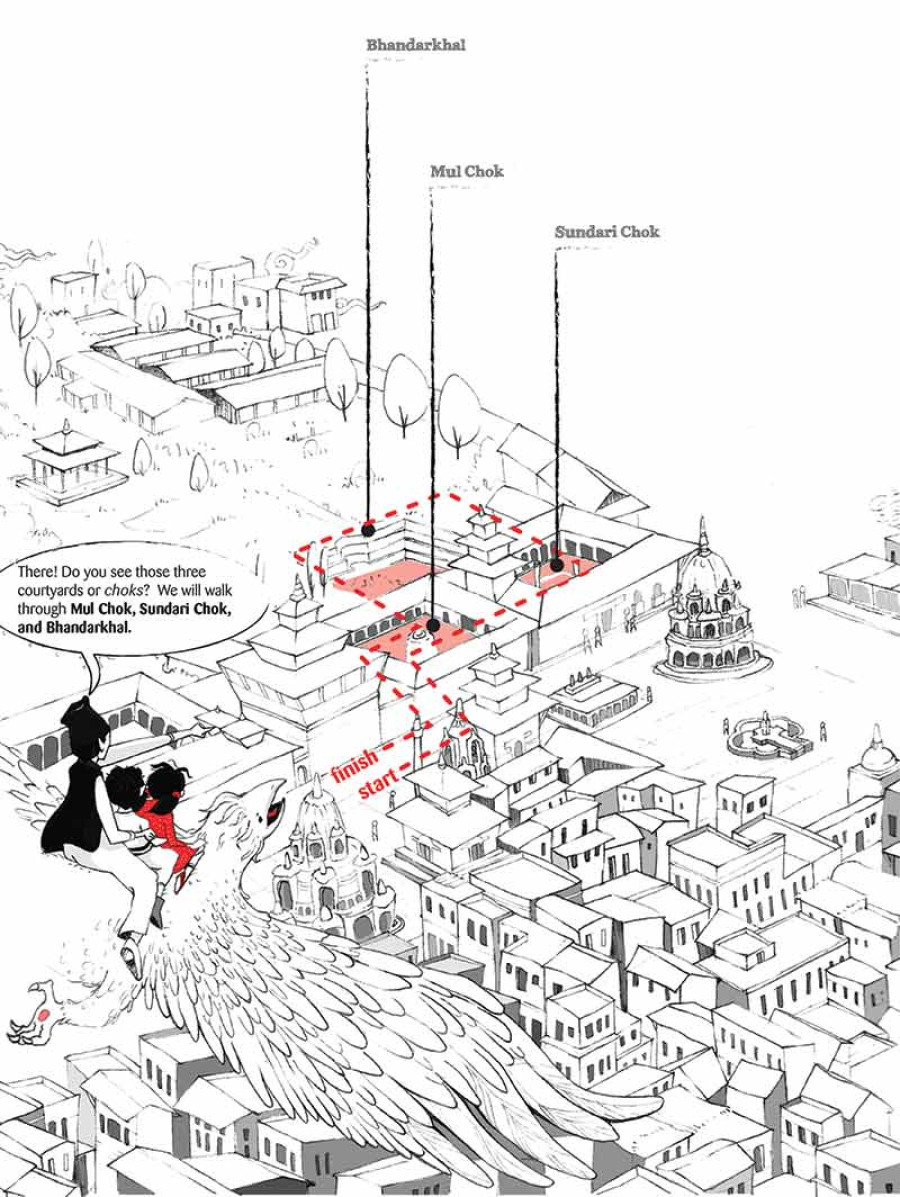Entertainment
Hunting for treasures at Patan Durbar
Beautiful as they are, the different heritage sites in the Valley can be confounding places.
Sanjit Bhakta Pradhananga
Beautiful as they are, the different heritage sites in the Valley can be confounding places. While their aesthetic beauty and ambiance can be soul-stirring for locals and tourists alike, rarely are either set of visitors able to truly delve into the history and cultural significances of the chowks, temples and palaces that they are admiring. But now a new interactive map—Let’s Discover Patan Durbar—is aiming to change that by creating a map that aims to inspire users to explore the rich heritage of Kathmandu Valley in a fun way.
Originally conceived as part of the educational outreach of the recently-concluded Kathmandu Triennale 2017, Let’s Discover Patan Durbar will now be available free of cost at the ticket counter at the Patan Museum starting Tuesday. Developed specifically for children and young adults, this interactive map will come replete with treasure hunts, historical snippets, illustrations and activities that will encourage them to engage with what they are seeing, hearing and feeling at three different inner chowks—Mul Chowk, Sundari Chowk, and Bhandarkhal—of the Patan Durbar Square.

Speaking to the Post, Rishi Amatya, who helped create the content for the map, says that he originally thought of creating an interactive map for Nepali heritage sites while studying abroad in Wales. “When I visited different castles in Wales as a student, I realised that the Welsh had not only done a splendid job of conserving their heritage but all the sites also had interactive activities aimed specifically for children,” he said, “This not only ensured they had a ‘fun experience’ during their visit, but also left a lasting impression about their own history and heritage in their minds. Ever since, I have been looking to replicate it for Nepal, and now it has come to fruition.”
But, according to Amatya, creating a map that would be both engaging and informational for children was no easy feat. Collaborating with illustrator and animator Suman Maharjan, he admits that he initially struggled to create a product that would be simple to understand but still of value for the target audience. “When it comes to children, we adults tend to make a lot of assumptions. It took us a long time to strip down the stories and break them down, so that the content was engaging and also educational.”
It is a sentiment echoed by Sharareh Bajracharya, the founder of Shrijanalaya—an organisation that focuses on arts education—who collaborated for the project. “When you are creating something for this age group, you automatically assume that it is easy. But the reality is far from it. We were deliberating until the very last moment as to what the kids should take away from the experience,” she said. According to Bajracharya, it was essential that the map was not traditional and the end product was relatable and easily navigable. “Which is why, at the very start, we invite the children to take a ride on a Garud and look at the Patan Durbar Square from a bird’s eye view. This way, they can locate exactly where they are on the map before beginning the treasure hunt.”
From there on, the interactive map leads the children towards Mul Chowk—where they identify Taleju Bhawani, then to Sundari Chowk, before ending with various activities at the Bhandarkhal pond. At each stopover, the children are encouraged to look at structures and idols while constantly staying on the go. At Sundari Chowk, for instance, the children are required to identify the mythical Makkar at the traditional waterspout, a fun exercise given that it is hidden from plain sight.
According to Bajracharya, each of the three chowks has at least three interactive activities, including one at the very end where the children are asked to close their eyes, listen to what surrounds them, then draw out what they hear. “Kids seem to really enjoy this enhanced experience at the Museum,” Bajracharya says, “But the best part is that each experience is unique and different kids return with different takeaways.”
Let’s Explore Patan Durbar, was created through a collaboration between artists, Shrijanalaya, the Kathmandu Valley Preservation Trust and the Patan Museum. Available in both English and Nepali, the project has been conceived as a ‘trial-run’ that can be replicated in other heritage sites of the Valley as well.
According to Suresh Lakhe of the Patan Museum, the map will help make children and young adults aware of the tangible and intangible heritages that surround them, and that the museum is eagerly awaiting feedback to see if the map can be expanded further to include the entire Durbar Square. “We hope that the information that is not readily available at first glance will be accessible for all. We are hoping this will revolutionise not just their experience at the museum, but also be a stepping stone in ensuring that the future generation remains intrigued by and engaged with their history,” he said.




 21.12°C Kathmandu
21.12°C Kathmandu










